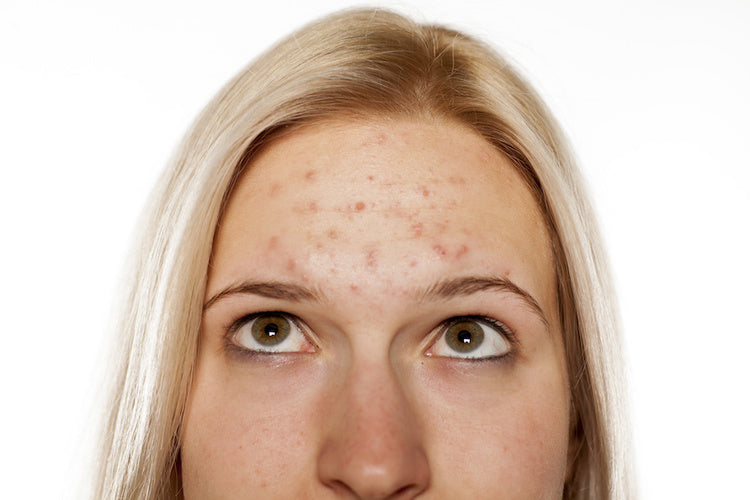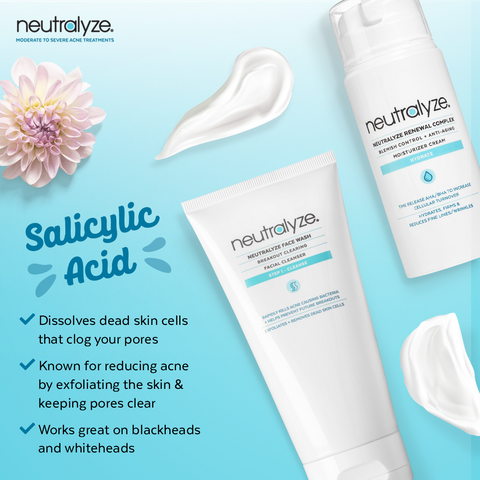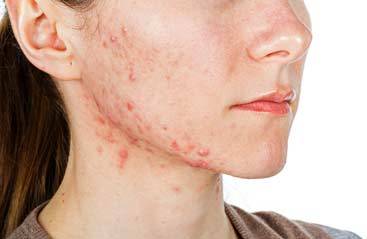The Stages in the Life Cycle of a Pimple

How long does it take for pimples to form, and how long do they last? Sometimes, it may feel like they develop overnight, especially when you wake up to the sight of one or more zits on your face. But the process is quite slower than you think—it takes around one to two weeks for acne spots to become visible on your skin.
How are pimples "born"? And, is there a way to slow or even stop their development from the moment you sense their growth? You'll discover the answers to these questions as we tell you more about the life cycle of a pimple.
Discovering the "Womb" Where Pimples Form
Our skin is made up of layers, with the epidermis on top. New cells form at the base of the epidermal layer and go their way up to the surface. Cells die and harden as they reach the uppermost layer—the stratum corneum. This layer features tightly packed dead skin cells that continually fall off and get replaced.
Beneath the epidermis is the dermis, which is mostly made up of connective tissue. The dermis contains blood vessels, supplying blood to the epidermis and elasticity to the skin, in general. Nerve receptors relaying signals—temperature, touch, pain, and itching—from the epidermis also make up this layer. The sebum-producing sebaceous glands and hair follicles, which play central roles in the formation of pimples, are also located in the dermis.
Sebum reaches the skin surface through hair follicles, to which body hair is attached. Follicles look like tube-like openings in the dermis. They are made up of the pore opening, hair bulb and root, sebaceous gland, and sebaceous duct.
A Pimple's Life Cycle
Birth
Pimples first develop due to blockage in the pores, which happens in two steps:
Higher sebum production
Sebaceous glands that are attached to your hair follicles produce sebum, which is composed of fatty acids, waxes, and sugars. Sebum stays in the sac-like glands for a week before the sac erupts and the oily substance flows into the hair follicle.
Sebum helps maintain your skin's flora, which is the balance of normal bacteria and of your body's defense mechanisms, and retains moisture. Its lipid content creates a slightly acidic, microbe-fighting film on your skin.
When your body overproduces sebum, breakouts and acne happen.
Below are some factors that influence the amount of sebum your body makes:
Hormonal changes
Teens experience pimple breakouts during puberty, when androgens increase in both boys and girls. Women are prone to have pimples during their menstrual period amid the rise of progesterone. The same thing happens when both estrogen and progesterone levels shoot up during pregnancy. Meanwhile, menopausal women can also have acne because estrogen levels decline.
Genetics
If your parents have oily skin and had acne, you're also likely to have the same skin type and condition.
Medications
Drugs with testosterone, corticosteroids, or lithium can trigger or worsen acne.
Diet
What you eat can cause your sebaceous glands to go on overdrive. Salty and sugary foods, sweet beverages, alcohol, meat with saturated fat, refined carbohydrates, and dairy products can trigger sebum overproduction.
Oil and dead cell buildup
Pores normally allow sebum to flow out to your skin once it's filled, keeping it hydrated. But sometimes, the oil and dead cells can get trapped in the pore. The mixture of sebum and other substances hardens, blocking the pore.
Treatment
Pores can often look larger and darker when they're clogged. To clear blocked pores, don't try to scrub or squeeze that part of your skin, as the action may enlarge them further. Instead, use a gentle, non-comedogenic pH-balanced cleanser twice daily. You can also apply an exfoliator to dissolve the clogged debris.
Growth
When cleansing fails to unclog trapped sebum and dead skin in the pores, these two incidents give rise to pimples:
Bacterial infection
Propionibacterium acnes naturally exists in human pores. But when the sebum and dead skin cells become packed in the pore, oxygen won't be able to freely flow in and out of the pore. This encourages plenty of P. acne bacteria to thrive, releasing enzymes that inflame follicles.
Inflammation
When the skin ruptures, your immune system sends white blood cells to kill the infection. An inflamed follicle can expand to show off a whitehead, or the plug may break into the surface with a brown color (which is actually a congested pore filled with oil and bacteria) after exposure to air.
Treatment
Sometimes, all you feel is a painful lump under your skin (blind pimple), when there's no redness due to inflammation. Avoid popping or squeezing it. You can soak a clean wash cloth in hot water or use a warm compress to apply to that area of your face for 10-15 minutes. Doing this three to four times a day will help the pimple draw nearer the epidermis, form a head, and release the pus. Don't apply makeup on the area until your pimple heals. You may use topical treatments containing ingredients like salicylic acid to unblock pores or nitric oxide that fight against inflammation. Keep the area clean to prevent bacteria or dirt for worsening the pimple.
Death
Once the pus has oozed out of the pore, the follicle starts to heal. But, your skin may still appear red with scaly patches. It may even scar when the wall of the pore breaks down. Deep scarring may happen if the pus spills into surrounding tissues.
Treatment
Use a soothing acne treatment that can heal acne marks and help fade discoloration. Consult your doctor if the acne persists despite applying your personal solution.
Ways to Help Pimples Heal Faster Pimples have unique life cycles, with some not turning into whiteheads. But, they all need time to disappear.Leave them alone.
Pimples will naturally heal in three to seven days, with the head, which eventually becomes crusty, falling off. Instead of attempting to pop pimples, consult your doctor when cysts and nodules form to avoid scarring. Popping acne will just make the healing period last longer.
Maintain skin hygiene.
Gently cleanse your face twice daily, especially after makeup removal or gym workouts. Cleansers with salicylic acid can reduce swelling and unplug your skin surface. Meanwhile, mandelic acid helps regulate sebum production and promote exfoliation and cell turnover.
Avoid rubbing your face vigorously to prevent drying your skin. Also, choose a moisturizer that matches your skin type.
Spot treatments with ingredients that exfoliate the skin to unclog pores will also help.
Eat healthily.
Check your food intake and go for a low-glycemic diet—more fiber-rich food, vegetables, and fruits. Doing so will reduce blood sugar spikes that result in inflammation throughout your body.
Stay hydrated.
Dry skin can prompt your sebaceous glands to produce more oil sebum.
Men's daily fluid intake should be about 15.5 cups (3.7 liters), while women's should be drinking around 11.5 cups (2.7) liters, according to the U.S. National Academies of Sciences, Engineering, and Medicine. Fluid covers water, other drinks, as well as vegetables and fruits with high water content.
Lukewarm water is gentle on your skin and is recommended for baths and cleansing your face. Meanwhile, water with a 6.5 to 8.5 pH balance is ideal for drinking.


